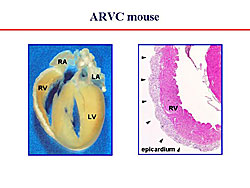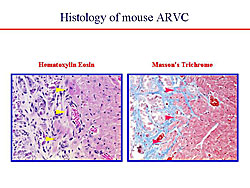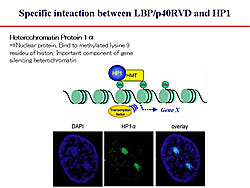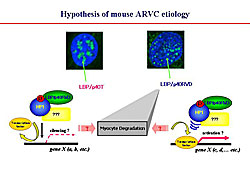Cardiovascular Proteomics in Health and Disease
Joseph Loscalzo
Boston University School of Medicine
Boston, Massachusetts
The genome provides the floor plan of the organism, but a variety of events that occur following the expression of the proteome that is defined by that genome that cannot always be predicted by the genome itself. Therefore, the genome implies phenotype, but the proteome is phenotype.
Oxidant stress is an important determinant of the proteomic phenotype in the cardiovascular (CV) system, particularly in disease. It can be defined as the excess production of reactive oxygen species that outstrips antioxidant defenses. Oxidant stress is implicated in a variety of processes in which a wide range of antioxidant molecules, including DNA, lipids, and proteins undergo a variety of oxidative modifications. These are involved in the pathogenesis of many CV diseases and are caused by risk factors for coronary heart disease (CHD). The control of vascular oxidant stress involves the balance of antioxidants and reactive oxygen species (ROS).
A host of low molecular weight (LMW) antioxidants, including vitamins C and E, and antioxidant enzymes, such as the SODs, catalase, glutathione peroxidases and paraoxonases, are bound to LDL, glucose 6 phosphatede hydrogenase, and glutathione reductase, which offset the flux of ROS, which are largely derived from partially reduced molecular oxygen, and metabolize those species to less chemically active forms.
Thiol proteome
Oxidant stress impacts a variety of functional groups in the proteome, but the most important of these is the thiol proteome. The thiol groups serve as redox buffers (oxidant stress targets in the course of the redox buffering capacity), redox signaling intermediates, and as oxidant stress markers in their higher oxidized forms.
The sequence of redox reactions that govern oxidation protein thiols begins with a monothiol protein (PrSH) that undergoes oxidation to the thiolate anion, and then to sulfenic, sulfinic acids and sulfonic acids. The first two steps are reversible oxidation steps and the last two are stable end-oxidation products, at least under physiologic conditions. In addition, protein monothiols can engage in thiol-disulfide exchange reactions with LMW thiols (glutathione is the most important), which serves as an antioxidant thiol buffer. They can undergo modification through reaction with reactive nitrogen species, such as peroxynitrite, to form S-nitroso proteins, and they can undergo protein-protein disulfide exchange reactions to form mixed disulfides between proteins.
Vicinal dithiols are another important subgroup of the protein thiols, which are chemically reactive with each other, mainly due to their steric adjacency within the tertiary structure of the protein. Vicinal dithiols are important because these are the most sensitive indicators of oxidant stress within a protein. These are the first species to undergo oxidation, usually to vicinal disulfides, but occasionally to mixed disulfides.
If each species could be identified, it would be possible to define a hierarchy of oxidation that begins with vicinal disulfide oxidation and following through to the sulfonic acid modified forms of the monothiols.
Glucose 6 phosphatedehydrogenase
G6PD is an important enzyme for governing oxidant stress within the erythrocyte. We and others have begun to think about the role of G6PD in other nucleated cells, especially the endothelial cell in the CV system, because it is the most important determinant of NAD(P)H stores in the cytosol. NAD(P)H is key because it serves as the reducing equivalent necessary for reducing glutathione disulfite to GSH, and is an important co-factor for nitric oxide production via eNOS. It is also an important co-factor for the reduction of dihydrobiopterin to tetrahydrobiopterin or the synthesis of tetrahydrobiopterin from either of the de novo or salvage pathways. Glutathione is an essential reducing mediate necessary for normal vascular function.
Glutathione is also important because it is derived from NAD(P)H and it is the essential co-factor for glutathione peroxidases to reduce lipid peroxides and hydrogen peroxide into corresponding alcohols.
Work by Leopold, Loscalzo, and colleagues showed that in endothelial cells
DCF fluorescence is increased when G6PD expression is suppressed with antisense or SRNA and is decreased when it is overexpressed with an adenoviral vector, compared to controls. Along with these changes are anti-parallel changes in NAD(P)H; suppressing G6PD reduces NAD(P)H and overexpressing G6PD overexpresses it. Similar changes are seen for the NAD(P)H and NADP+ ratios.
These changes lead to a significant reduction in glutathione upon exposure to hydrogen peroxide when G6PD is in the control setting and endothelial cells are transfected with the empty virus. In contrast, antisense causes greater suppression of GSH when the cells are exposed to peroxide. The use of the adenoviral vector restores or maintains the GSH levels. If the cells are infected with the adenoviral vector following suppression of antisense, the extent of reduction of GSH with peroxide can be limited.
Response of thiol proteome to oxidant stress
This system was used to examine the consequences of oxidant stress on the thiol proteome.
Vicinal dithiols
Vicinal dithiols are important regulators of oxidant stress, and comprise about 5% of the total thiol protein pool, and serve as the first line of defense against oxidant stress, largely as a result of the reaction of the vicinal dithiols compared to the monothiols.
As a result of oxidant stress, caused by increasing concentrations of hydrogen peroxide in a control endothelial cell pool and in a G6PD-deficient cell pool, a limited number of vicinal diothiol proteins were detectable. There was an increase at 100 micromolar of hydrogen peroxide, but this was much less at 500 micromolar, because the vicinal disulfides can not be pulled out of the lysathe from cells with the phenylarsine oxide. This pattern “shifts to the left” with a G6PD deficiency; at 100 micromolar there is a similar pattern, and a reduction in the detectable vicinal dithiol bands at higher concentrations.
Glutathiolation
Glutathiolation is another example of the response of the thiol proteome to oxidant stress. Under debate is whether or not there are elements in the primary sequence of the tertiary structure of the protein to facilitate glutathiolation. It also serves as another defense against oxidant stress by facilitating repletion of the free glutathione pool from the protein thiol pool using protein thiol-reducing equivalents as a source of reducing power for more GSH. Deglutathiolation requires the glutathione reduction system and, thus, adequate NADPH stores. Glutathiolation can also be seen as protecting protein thiols from irreversible oxidation.
2-D nonreducing/gel methodology
These are used to identify mixed disulfides that can form in the presence of increasing oxidant stress. In control cells and G6PD-deficient cells, at 8 mM hydrogen peroxide, the bands are diagonal, which reflects increasing mixed disulfides, with an even greater increase in the G6PD-deficient cells.
Protein S-nitrosation
Protein S-nitrosation is another sensitive index of response to oxidant stress. Whether or not the post-translational modification is stochastic or specific remains unclear. Protein S-nitrosation serves as another defense against oxidant stress by repleting the GSH pool from the protein thiol pool by a similar biochemical mechanism. Denitrosation occurs principally via thiol-S-nitrosothiol exchange, and S-nitrosation protects protein thiols from irreversible oxidation, and protects and preserves NO bioactivity.
The assay used by Loscalzo and colleagues to detect S-nitrosoproteins was derived from work by Jaffrey and Snyder. The assay first involves the blockade of thiol groups with NTMS, and then the gentle reduction of S-nitrosothiols with a low concentration of ascorbate, and the resulting sulfhydrol group is then labeled with NTMS biotin, and then the biotin-labeled protein is pulled out and subjected to the 2-D gel electrophoresis and mass spectrometry.
About 20 proteins have been identified, of which 5 are important proteins, including vimentin, ubiquitin conjugating enzyme E2, peroxireloxin 1, GAPDH, and beta-actin.
Most of the S-nitrosation appears to occur in the mitochondria or in the peri-mitochondrial domain.
In their working hypothesis, there are 2 concomitant cycles within protein thiol pools that focus on the thiolate anion, which can then undergo irreversible oxidation and then ultimately reversible mixed disulfide formation. Alternatively, it can undergo S-nitrosation, a process that can be seen as reversible. With increasing oxidant stress, sulfinic and sulfonic acids result, which are irreversible end products of thiol oxidation.
Another way to look at this process is to consider the thiol proteome as a sensitive index of increasing oxidant stress, ranging from low levels being important for oxidant signaling, intermediate levels stimulating a compensated oxidant stress response, and higher levels stimulating an uncompensated stress response. There are parallel consequences to these changes with regard to cell phenotype. Those range from early manifestations of glutathione oxidation and NADPH oxidation, F2 isoprostane formation, and up to the unfolded protein response, 3-Nitrotyrosine formation, mitochondrial dysfunction, and apoptosis at the highest levels of oxidant stress. This type of approach allows for defining markers and intermediates that are essential for these phenotypic changes that reflect the modulation of endothelial function that appears to be important CV disease stimulated by oxidant stress responses.
Hyperhomocysteinemia
Hyperhomocysteinemia is another important source of oxidant stress in relation to atherothrombosis. This was first proposed as an important determinant of atherogenesis by McCully in 1969. Now evidence from more than 20 studies suggests that even mild-to-moderate elevations of plasma homocysteine confer a significant risk for atherothrombosis. Hyperhomocysteinemia was found in 20-40% of patients with vascular disease, but in only 2% of unaffected persons.
Homocysteine has an important LMW thiol that sits between the re-methylation pathway and the trans-sulfuration pathway as a key intermediate in thiol metabolism. The rate limiting step for trans-sulfuration is defined by cystathionine-beta-Synthase. Re-methylation, which is the most important mechanism for eliminating homocysteine in vascular cells, is governed by folate and B12 levels, and the adequacy of M-THF reductase, methionine synthase, and betaine-homocysteine methyltransferase.
Using a CBS-deficient mouse model, Loscalzo and colleagues studied the consequences of hyperhomocysteinemia on endothelial function and other markers of oxidant stress. In this model, the heterozygous mice have a little less than one-half the normal CBS activity in the liver, about 2-times the homocysteine levels in plasma, and no detectable activity in the null animals have.
This group showed that endothelial function was abnormal in the animals that were heterozygous-deficient in CBS, and no abnormality in the response to NO donor. Along with these changes was a significant increase in superoxide generation by the aortae of these animals. Staining was consistent with the oxidant stress, and, importantly, these changes occurred in the absence of any morphological abnormalities in the vasculature.
They observed that this increase in oxidant stress was largely a consequence of suppressing the expression of glutathione peroxidase type 1. This is a selena-cysteine containing protein, and its important function is the enzymatic reduction of hydrogen peroxide and lipid peroxide to their alcohols, using glutathione in the process. The reason a deficiency of this enzyme may lead to endothelial function is that these peroxides and their peroxal derivatives can inactivate NO.
Upchurch and Welch showed that homocysteine dose-dependently reduced GPx activity in endothelial cells in culture. In at least cultured endothelial cells this is associated with a significant reduction in the expression of GPx message. This effect is largely a consequence of transcription suppression.
GPx1 suppression, both transcriptional and translational, is a key determinant of the oxidant stress of hyperhomocysteinemia, and thus it should be possible to restore endothelial function by overexpressing Gpx1. Work by Weiss showed the consequences of overexpression in endothelial cells exposed to hyperhomocystenemia. The bradykinin-dependent release of NO is not completely restored, but is reversed. In addition, cyclic GMP levels are improved. Signaling by bradykinin-dependent release is also improved when the cells were transfected with GPx1 CDNA.
When Loscalzo and colleagues crossed the CBS-deficient animals, it was possible to completely reverse the in vivo endothelial dysfunction that was observed in the CBS-deficient background. Thus, it was possible to restore this abnormal response completely to normal. These data argue that one of the most important determinants of oxidant stress and endothelial dysfunction in hyperhomocysteinemia is GPx1 deficiency,
More recently they have studied the proteome of these CBS-deficient mice and a wild-type animal given either a methynine-rich chow or normal chow, and then plasma, liver, aorta, and heart were isolated, to assess thiol oxidation, mixed disulfide formation, and methylation states within those proteomes. They also studied more conventional proteomic analyses in overall protein expression in those proteomes. Their analysis involved a simple methanol extraction of the protein from these tissues, separation by 2-D Gel EP or LCLC analyses in sequence, and also sequencing and identification by conventional MS methods. |



